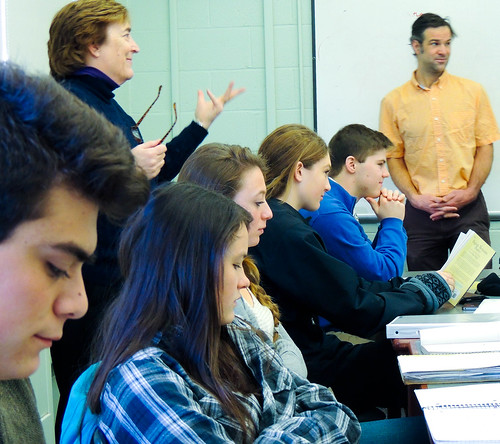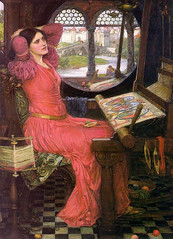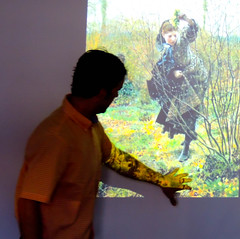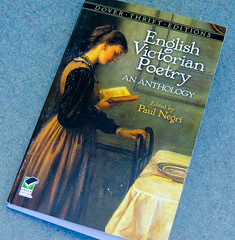Everyone agrees about ideal learning environments. They often involve focus on projects, student activity, a continuum of individual and group dynamics, and interdisciplinary approaches that explore multiple perspectives--historic, artistic, literary, scientific, linguistic--on a topic or subject. Let's look at one British literature class that is studying
Alfred, Lord Tennyson's The Lady Of Shalott, a mid-19th Century Victorian ballad.

In the poem, a lovely woman lives out a mysterious curse. In a lonely tower on an island (Shalott) in a river that flows down to Camelot, she weaves. The product of her loom is a reflection of all the reality she experiences, (as is the case with
all art, stupid!) But her curse is specific. She must view the world outside her tower--not through the open portals--but through a large mirror open to a portal. The world passes in reflection: farmers harvesting barley, handsome boys afoot, newly-wed couples by moonlight. But she must never see them directly or else....
What does this mean to
you? Whom or what does the Lady represent?
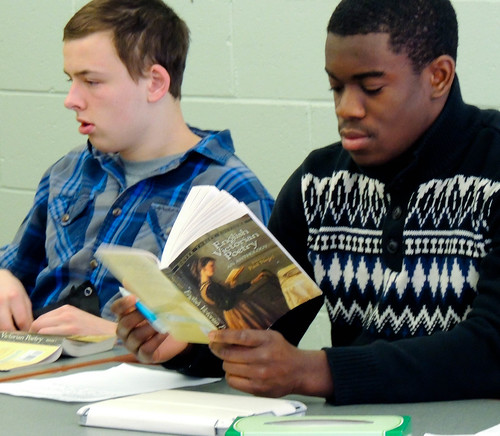
In the mirror, Sir Lancelot approaches. The Lady chooses to look directly!

"She left the web, she left the loom,
She made three paces thro' the room,She saw the water-lily bloom,She saw the helmet and the plume, She'd looked down to Camelot.Out flew the web and floated wide;The mirror cracked from side to side;'The curse is come upon me,' cried The Lady of Shalott."

Tennyson's
The Lady of Shalott inspired several stunning works of art, including--most famously--
John Williams Waterhouse's remarkable
The Lady of Shalott. We see her in ultimate passion, releasing the anchor chain that frees her boat to drift downstream to Camelot. She is doomed.

Bringing a classically trained, accomplished artist--like Proctor's own Corby Leith '92--into an English classroom might be a boast point at a lot of schools, but at Proctor, where students are currently touring Europe's great museums, learning Spanish at dining tables in Segovia, studying water resource management on the Rio Grande, and exploring jungle habitats in Costa Rica, this is what we do. Corby talks us through the power and sensibilities of the painting. The Lady is resigned to her immediate death...before her boat reaches Camelot and Lancelot. And Lancelot's "She has a lovely face...." Does he possibly know the depths of her sacrifice?
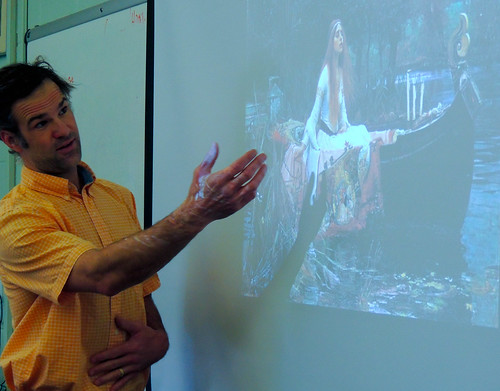
What must an artist do to ever live directly in the world?
It was not that long ago....only about twenty-five years....that Sarah Will had Corby Leith on Project Period....juggling. You can be certain that their discussion on this topic continues!
